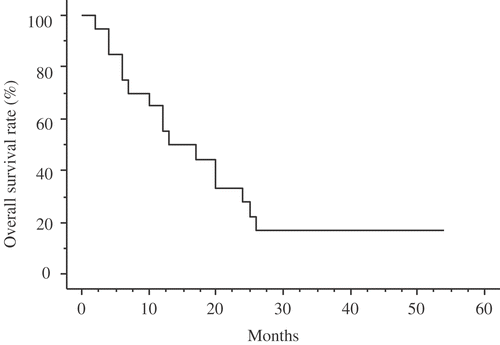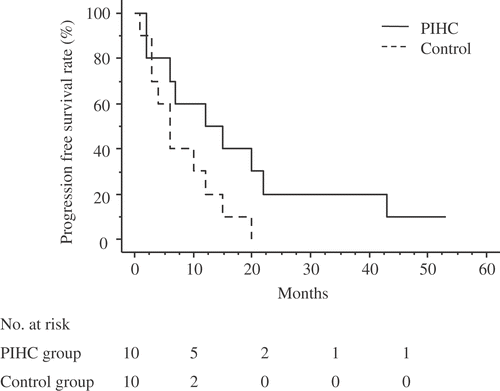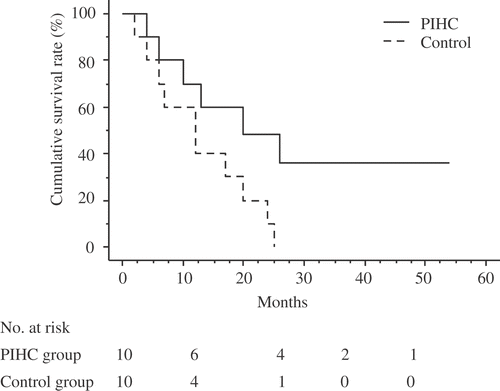Figures & data
Table I. Clinicopathologic features of patients.
Figure 1. (a) Two infusion catheters that were placed beneath the hemidiaphragma and in the Douglas pouch for infusion and drainage. (b) Thermotron RF-8, 8 MHz radiofrequency (RF) capacitive heating equipment. In general, two opposing 25 cm diameter electrodes were selected for heating. To prevent surface burning, a cooling pad was used during hyperthermia through which 0.9% saline cooled to 5°C was circulated.
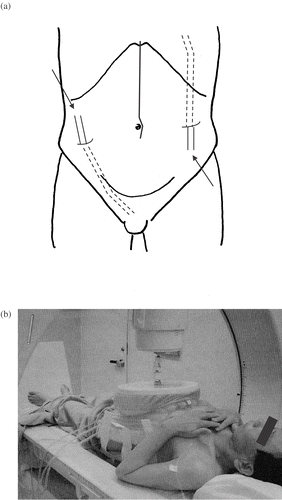
Figure 2. Typical time course of the temperature (°C) in the abdominal cavity and RF power in watts.
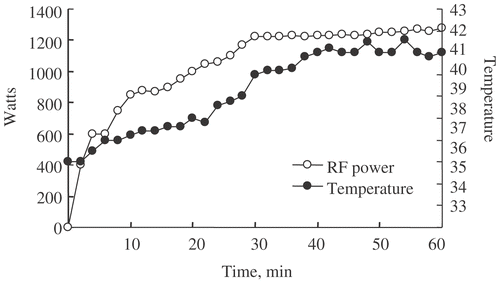
Figure 3. Cumulative survival of gastric cancer patients in this study (the relationship between survival months and cumulative survival rate using the Kaplan-Meyer method). Survival was computed from the initial surgery performed at our institution.
